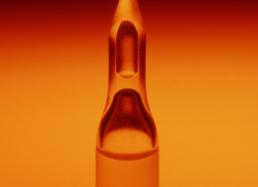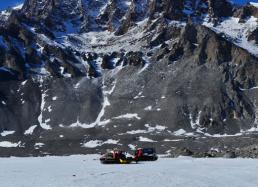Meteorites & More
Statistically speaking, meteorites fall uniformly on Earth, so it may seem strange that 70% of those found so far have come from Antarctica. Why so many here? Because Antarctica’s inland floes push and pile up meteorites along the fringes of mountain glaciers in specific locations (called “meteorite stranding surfaces”), which makes them easier to spot.
The large numbers of meteorites found along these stranding surfaces include extremely rare specimens. Some meteorites contain organic compounds such as sugars and amino acids—the raw materials of life on Earth. Others carry presolar grains (minerals older than the sun) whose compositions can be matched to different types of stars that existed before our solar system.
Collection & Research Techniques
Some of the minerals, chemicals, and gases that give us these insights into the formation of our solar system are quite fragile. They can be lost or contaminated when exposed to heat and water. That’s why scientists use metal tongs rather than their hands to pluck meteorites from the ice.
Collected specimens are sealed in clean bags, stored in freezers at -15° C, and shipped home, where they remain in deep freeze until they are thawed in preparation for research. Thawing takes place inside special cabinets containing gases that prevent condensation. Then bits of the specimen are snipped off and analyzed in myriad ways to determine the meteorite’s properties and origin.
The Project Mission
The 2012 meteorite collection expedition is part of the Polar Studies Division of the Geological Survey of India's efforts to expand its Antarctica program. Field Museum scientist Dr. Philipp Heck will help the team establish procedures for locating, handling, documenting, and curating meteorites based on the successful Antarctic Meteorite Search (ANSMET) program criteria.
Specimens collected during the 2012 expedition will be kept in a dedicated curatorial facility in India. A curatorial plan will ensure the protection of meteorites through a loan policy, and a scientific review process will make these specimens available for study by qualified researchers from the Indian and international scientific community.




